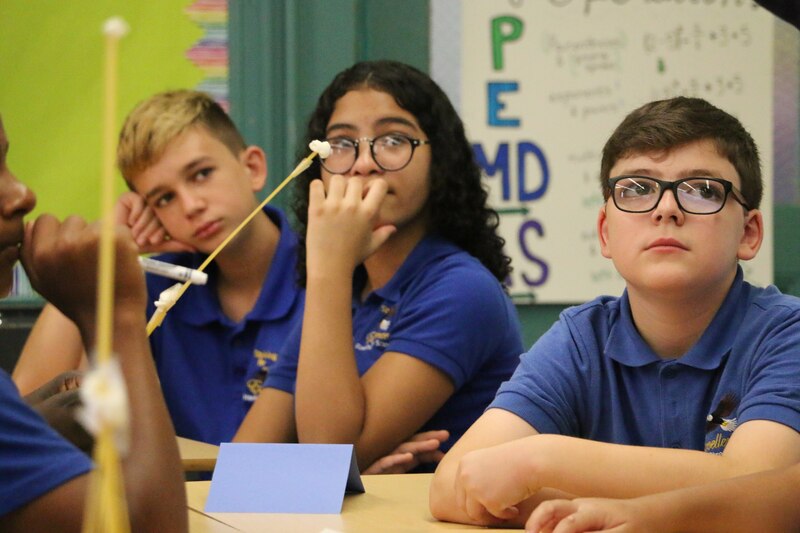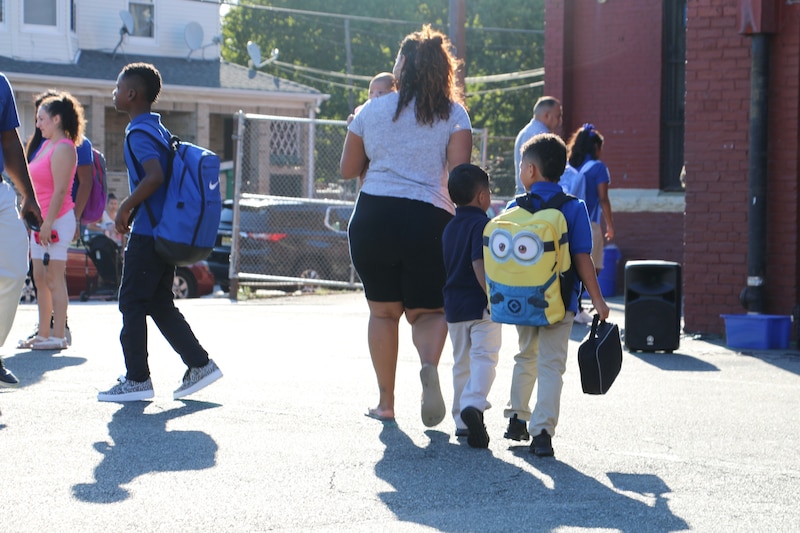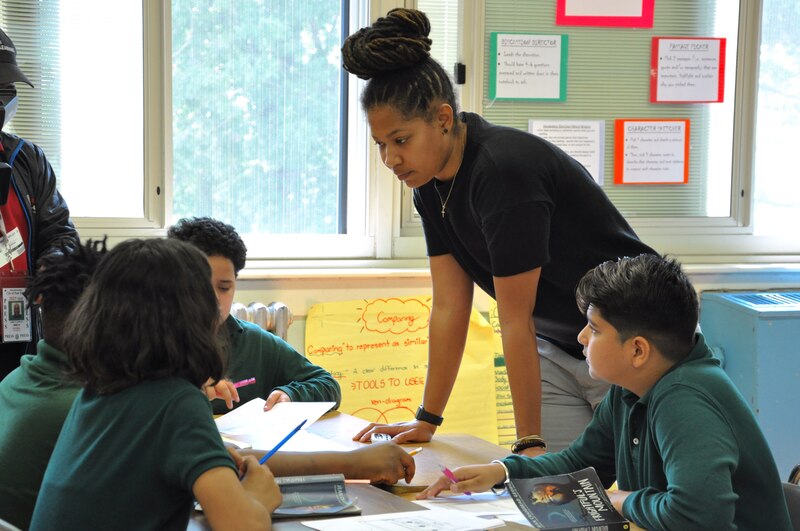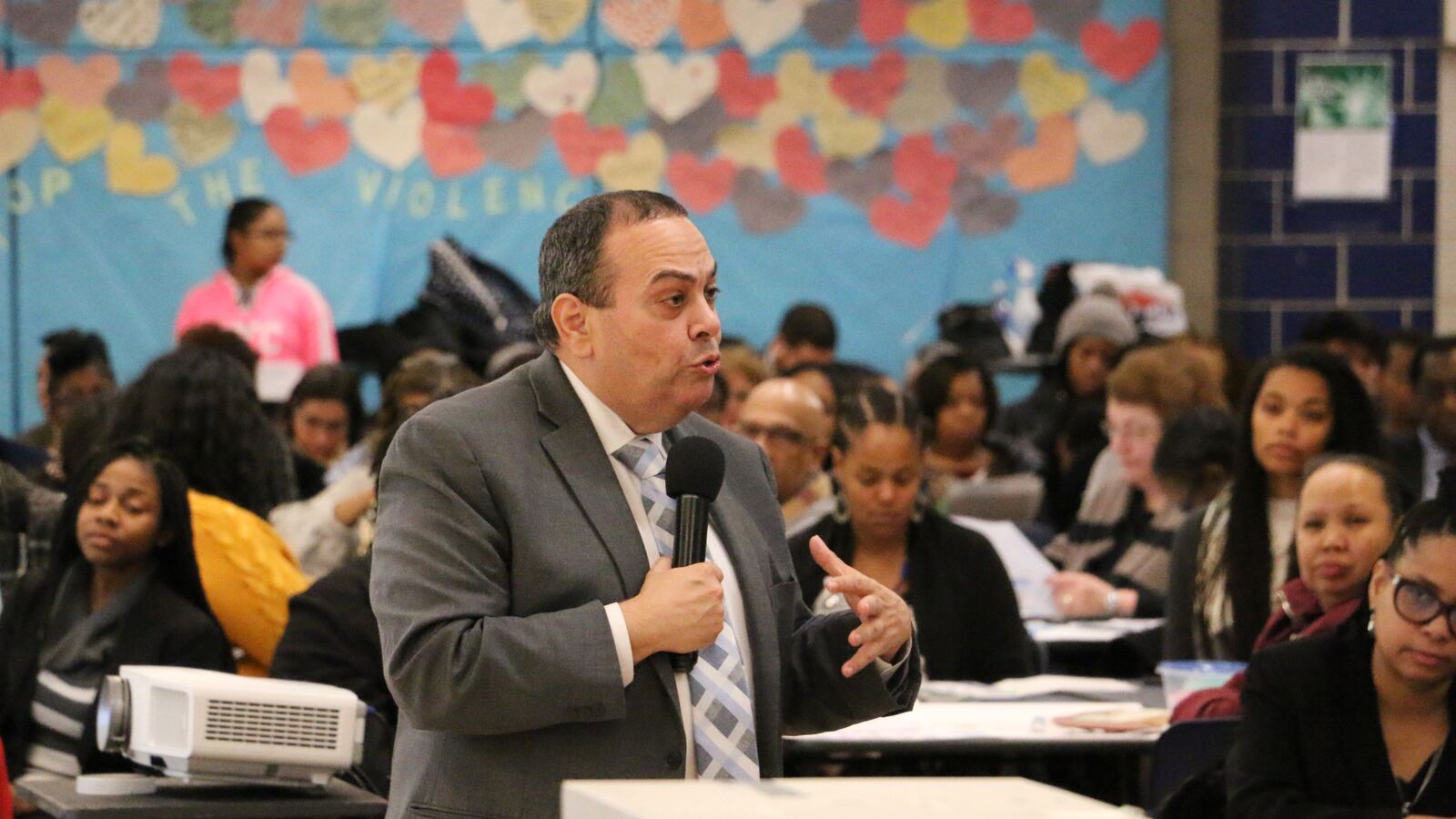Roger León’s Clarity 2020 plan for Newark schools, unveiled last month, has 168 action items. We’ve broken them down so students, parents, and educators can know what to expect in the upcoming year.
Some of the items are concrete and measurable, such as creating a system that flags struggling students. Others, such as pairing every Newark student with a mentor, name goals that seem challenging to achieve in just a year. Some outline plans to collect information that would allow changes to be made in the future. Much of Clarity 2020 is open-ended, listing areas where the district still needs to come up with detailed plans.
León has already gotten started on some of the agenda items but others have yet to undergo public discussion or action. What happens with the plan matters for León’s future, and that of the city’s schools, as observers are watching closely to see whether his ideas translate into action and improvements for students.
We’ll be tracking what happens to the promises — and will update them when León delivers a more detailed, decade-long plan that he has said is coming as soon as next year.
Here are the Clarity 2020 plan items, broken down into changes that students, guardians, and educators in Newark could see in the next year.

Students should see changes to their school buildings, how they get to school, and what happens if they fall behind.
Renovate school buildings: The district plans to make sure students attend class in “state of the art buildings and classrooms with the light, heat, space, air, and technology needed to learn and compete globally.”
- This could be hard because … many Newark schools are in disrepair, with leaking roofs, faulty heating and cooling systems, and outdated technology. Despite a court order requiring the state to replace Newark’s dilapidated schools, the state has only funded a fraction of the repairs Newark requested — and it has no plans to build any new schools in the district.
Revamp special education: The district says it will place students with disabilities in the “least restrictive environment,” analyze how often black and Latino students end up in special-education classes, and train educators and administrators about how to best work with students with disabilities.
- This is important because … federal law says students with disabilities should be placed in the “least restrictive environment,” which generally means classes with non-disabled peers whenever possible. (New York City’s recent push in that direction resulted in more students with disabilities attending integrated classes and also raised concerns about how well they are being served.) Nationally, black and Latino students students tend to be referred to special education more often than their white and Asian peers.
Support the “whole child”: The district will develop programs to support students’ physical and mental health, embed “health and social services coordinators” in every school, and train staff to help students cope with trauma.
- To accomplish this … the district wants to fill schools with social services for students and their families. This “community schools” approach has been tried before in Newark, with mixed results. It is expensive, complicated to pull off, and won’t by itself improve student achievement. But advocates say that students cannot learn until they feel safe and their physical and emotional needs are met.
Catch struggling students: The district plans to create a system that flags when students are struggling and prompts schools to come up with strategies to improve their attendance, academic achievement, and likelihood of graduating on time.
- To accomplish this … Newark could draw from successful models in Chicago and the Bronx where schools actively work to identify struggling students and intervene before they fall too far behind.
Extend learning beyond the classroom: The district plans to work with local businesses and colleges to create more internship and apprenticeship opportunities and to pair every student with a mentor.
- To accomplish this … the district can build on existing career-focused efforts, including a summer jobs program run by the city. Outside groups, like Schools That Can-Newark, specialize in helping schools provide real-world learning experiences for students. But finding mentors for all 36,000 students, or even a subset of them, could prove much harder.
Get students to school safely: The plans calls for “comprehensive transportation plan” developed in partnership with the city and New Jersey Transit, as well as the expansion of a program that places adult monitors along the routes that students walk to school.
- This is important because … families have long called on the district to offer transportation to more students, especially after the district stopped automatically assigning students to their nearest schools and instead allowed them to apply to schools anywhere in the city. Providing transportation to more students and monitoring students who walk to school could help reduce absenteeism and give families access to more school options. (The “Safe Passage” program that places monitors on students’ routes to schools is already expanding.)

Parents and guardians should get more help getting involved with their children’s schools and learning.
Help parents prepare their children for school: The district says it will make sure parents have access to prenatal care, health insurance, and immunizations; develop a “Healthy and Ready to Learn” plan for children entering preschool; and support teen parents.
- This is important because … children from low-income families enter school far behind their higher-income peers. León wants to tackle that phenomenon, which researchers call the “school readiness gap,” by starting to support students “while the baby is in the womb.” While research has shown that increase access to preschool and support for new parents can help close that gap, it will be an expensive and demanding proposition for the district to extend its services to thousands of younger children and their parents.
Get families involved: The district plans to establish parent organizations in every school that encourage families to get involved in school and district policy. León also plans to launch a “Superintendent’s Council of Parents.”
- This is important because… students’ grades and graduation rates can increase when their families are more involved in their education. However, schools sometimes struggle to draw parents in and many parents don’t feel welcomed or valued at their children’s schools. And it’s unclear the degree to which León wants parents to play a concrete role in decision-making — a question that has generated tensions in other districts’ parent engagement efforts.
Improve communication with families: The district says it will create an app to keep families informed about district news and resources; put out information in multiple languages; and use electronic billboards to send “essential messages.”
- This is important because … parents often say they’re unaware of what’s going on at their children’s schools or across the district. While better communication with families is a start, some observers say the superintendent and school board need to be more transparent about the policies they’re pursuing and changes they’re making.
Educate parents: The district will offer parent workshops, create a “Parent University,” and prepare a home-based learning program for parents.
- This could be … similar to New York City’s “Parent University,” which taught parents how to navigate their child’s education, or Detroit’s “Parent Academy,” which allowed parents to enroll in free parenting and career courses. Either way, parents who participate are likely to be more involved in the school system — a major goal of Clarity 2020. However, it’s still unclear what Newark’s parent-education program will actually do.

Teachers and administrators should experience more concerted efforts to help them improve.
Facilitate collaboration: The plan calls for “professional learning communities” among school staffers, including by enable principals to visit each other’s schools and give feedback.
- This sounds similar to … former New York City Schools Chancellor Carmen Farina’s approach to strengthening her school district. Her “Learning Partners” program emphasized collaboration among district principals and teachers. Lauren Wells, a consultant who helped write Clarity 2020, has said that one of the district plan’s tenets is “helping schools work together rather than in isolation.”
Diversify the teaching force: Newark plans to work with universities and outside groups to recruit and retain more black and Latino male educators.
- This is important because … research shows that when students have teachers who look like them, their performance improves. While roughly 90 percent of Newark students are black or Hispanic, only about 57 percent of their teachers are. Other districts are also looking to hire more nonwhite teachers; in 2018, New York City launched a $16 million program called NYC Men Teach aimed at recruiting and training male teachers of color.
Provide more training: The district is planning to train educators on an array of topics, from how to respect students’ cultures (known as “culturally responsive education”); how to develop students’ social-emotional skills and help them cope with trauma; and on the “science of learning.” School leaders would also get more coaching and mentoring under the plan.
- This is important because … students and parents have complained about cultural insensitivity at some Newark schools. Training faculty to embrace students’ cultures and recognize their own biases is one way to combat that problem. In general, much on-the-job teacher training has been found to be ineffective in changing teacher practices and improving student learning. Yet experts say that well-designed training that gets teachers to work together and provides coaching — two components of Clarity 2020 — can improve teacher effectiveness. The plan also plugs Newark into a robust national discussion about the need for teaching practices to reflect the latest understanding of how children learn.
Create pathways to promotion: The district plans create a program to develop “leadership capacity” in teachers and principals and to help “per-diem staff” (such as classroom aides) move into permanent roles.
- This is interesting because … León has made clear that he wants district leaders with extensive experience working in schools, so creating a leadership program for educators could be a way to prepare them for central-office roles. Giving teachers and principals opportunities for career advancement could also help keep them in the district.

